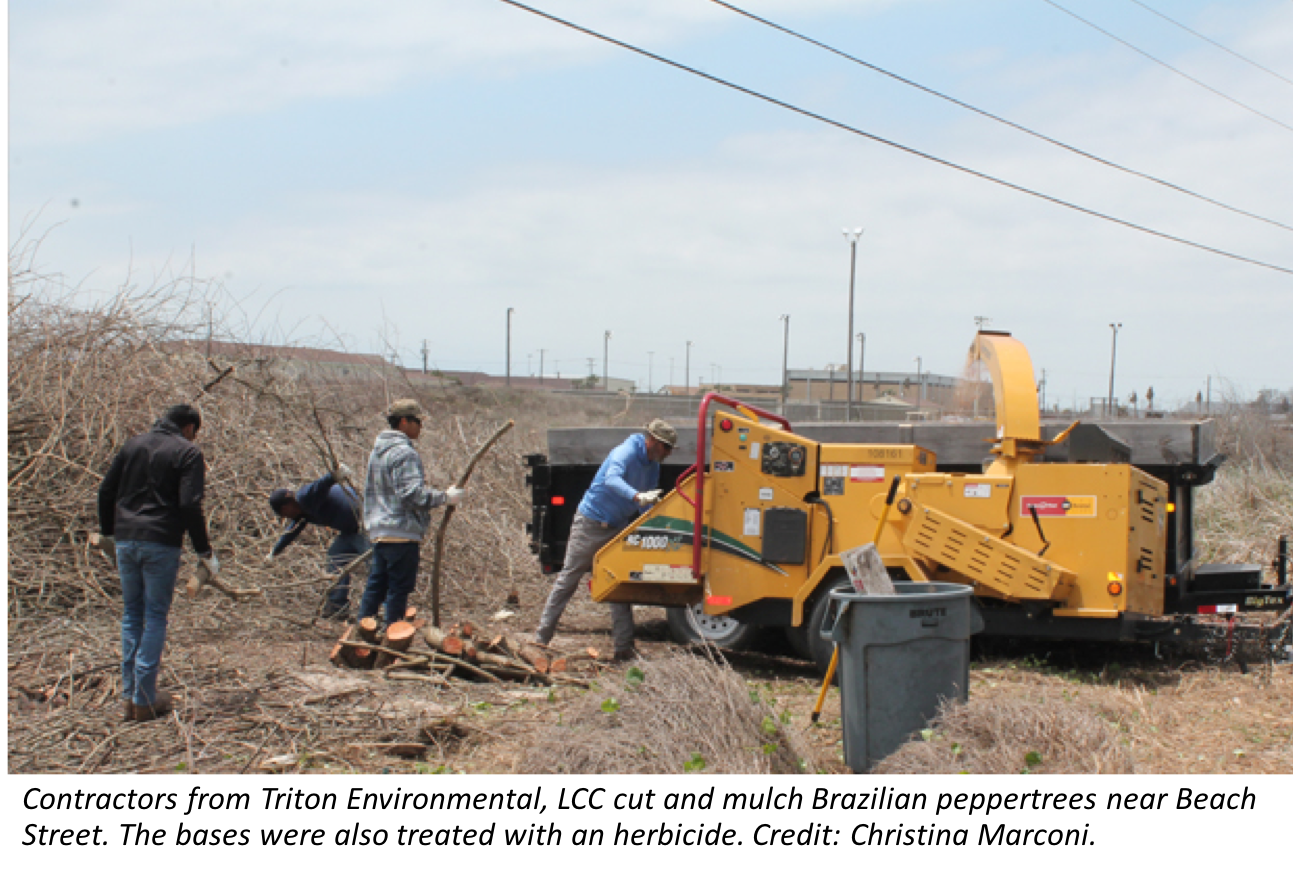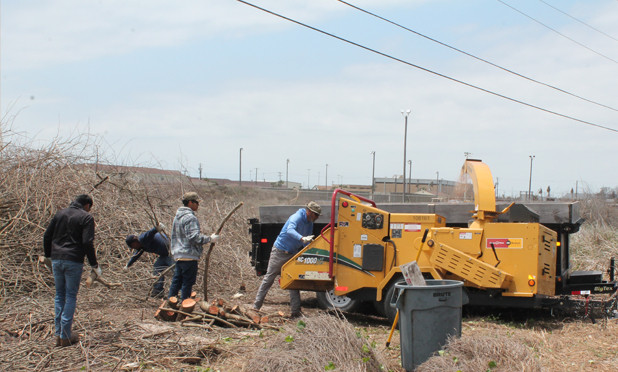 Like many tropical plants that were destroyed from the prolonged February freeze, the heat-loving Brazilian peppertree, experienced a significant defoliation. However, these invasive shrubs are starting regrow from the base and local organizations are taking advantage of freeze impacts to ensure the shrubs complete destruction.
Like many tropical plants that were destroyed from the prolonged February freeze, the heat-loving Brazilian peppertree, experienced a significant defoliation. However, these invasive shrubs are starting regrow from the base and local organizations are taking advantage of freeze impacts to ensure the shrubs complete destruction.
Invasive species removal of Brazilian peppertree has begun on the University of Texas Marine Science Institute (UTMSI) property located adjacent to Beach Street. The invasive shrub, Brazilian peppertree, has largely taken over the property between student housing and the Port Aransas Independent School District track facilities. The University and it’s the Mission-Aransas National Estuarine Research Reserve (NERR) program hired Triton Environmental, LCC to remove over 4-acres of the invasive plant.
Brazilian peppertrees are invading critical sand dune habitat by out competing and starving native plant species of nutrients that are natural to the dunes. Native plants such as coastal blue steam and sea oats provide higher quality food, shelter, and structure to the dune ecosystem. Brazilian peppertrees are a prohibited species in Texas that negatively impact dune habitats and other sensitive coastal environments.
The removal of the Brazilian peppertree is just the first phase of this project. The University and the NERR will work with local growers, volunteers, and contractors to replant and/or reseed the habitat to help native species get a head start repopulating the bare areas created by the invasive removal. This project is the latest in many that have been completed in partnership with the Texas Gulf Region Cooperative Weed Management Area. Funds to support the Brazilian peppertree removal were provided by the Coastal Bend Bays & Estuaries Program and UTMSI, through a grant from the Texas General Land Office Coastal Management Program.









